Grow Chayote at Home and unlock a world of culinary possibilities right in your backyard! Have you ever dreamt of harvesting your own exotic vegetables, impressing your friends with unique dishes, and knowing exactly where your food comes from? Well, dream no more! This DIY guide will empower you to cultivate this fascinating and delicious squash, even if you’re a complete beginner.
Chayote, also known as vegetable pear or mirliton, boasts a rich history, particularly in Mesoamerica, where it has been cultivated for centuries. The Aztecs and Mayans revered it not only for its nutritional value but also for its versatility in cooking. From savory stews to refreshing salads, chayote has been a staple ingredient in their cuisine.
But why should you bother to grow chayote at home? In today’s world, where we’re increasingly conscious of food miles and the impact of our consumption, growing your own produce is a powerful act. Plus, store-bought chayote can sometimes be bland and lacking in flavor. By growing your own, you’ll enjoy a fresher, more flavorful vegetable, free from harmful pesticides and herbicides. I’m excited to share these simple yet effective DIY tricks that will help you successfully cultivate chayote in your own garden, no matter the size! Get ready to embark on a rewarding gardening adventure and savor the taste of homegrown goodness!
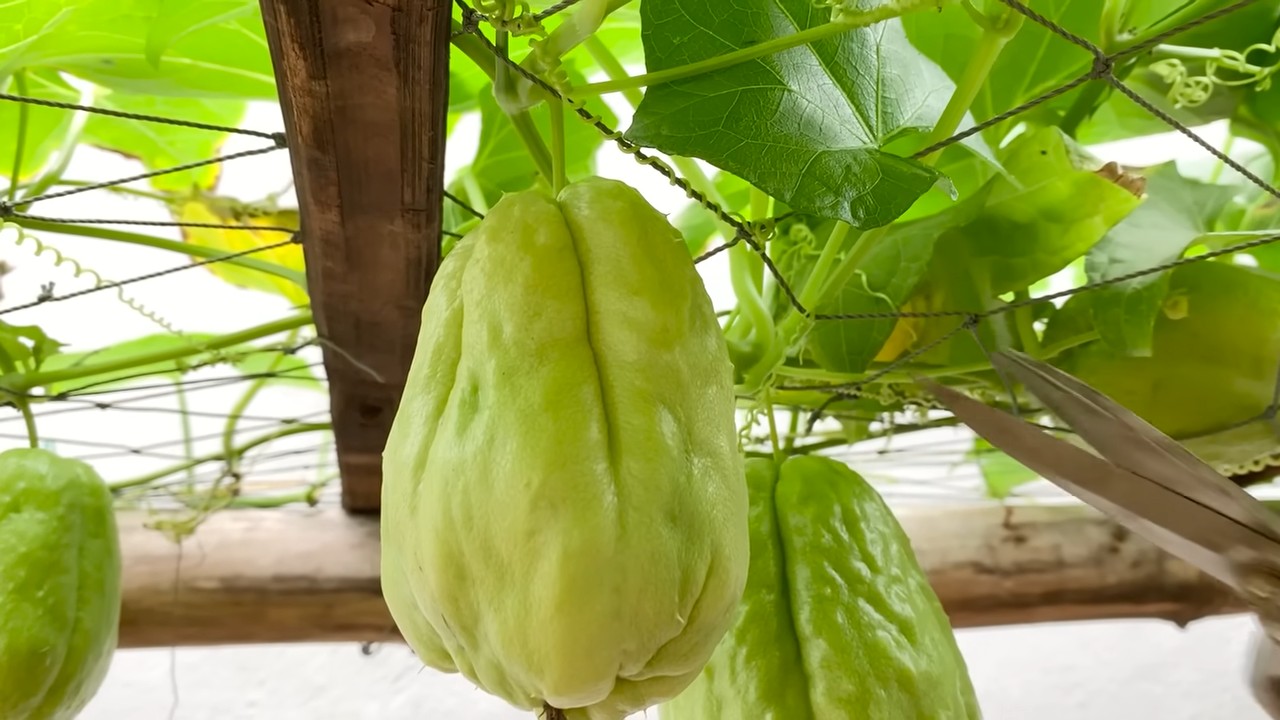
Grow Your Own Chayote Squash: A Beginner’s Guide
Hey there, fellow gardening enthusiasts! Ever heard of chayote squash? It’s this amazing, versatile vegetable that’s super easy to grow, and I’m here to tell you all about how you can cultivate your own chayote right in your backyard (or even in a large container!). Trust me, once you taste fresh, homegrown chayote, you’ll be hooked.
What is Chayote Anyway?
Before we dive in, let’s quickly cover what chayote actually is. Chayote (Sechium edule) is a type of squash that’s native to Mexico. It’s also known as vegetable pear, mirliton, or christophene in different parts of the world. The fruit is pear-shaped, light green, and has a mild, slightly sweet flavor. You can eat the fruit, seeds, leaves, and even the root tubers! It’s incredibly versatile in the kitchen – you can boil it, bake it, fry it, add it to soups and stews, or even eat it raw in salads.
Why Grow Chayote?
* Easy to Grow: Seriously, this is one of the easiest vegetables I’ve ever grown. It’s incredibly vigorous and doesn’t require a lot of fuss.
* Prolific Producer: One plant can produce dozens, even hundreds, of chayotes in a single season! Get ready to share with your neighbors.
* Versatile in the Kitchen: As I mentioned, chayote can be used in so many different dishes. It’s a great way to add a healthy and delicious vegetable to your diet.
* Space Saver (Sort Of): While the vine itself needs space, you only need one fruit to start a whole plant.
* Unique Flavor: The mild flavor makes it a great addition to many dishes.
Getting Started: What You’ll Need
Before we get our hands dirty, let’s gather everything we need. Here’s a checklist:
* A Mature Chayote Fruit: This is the most important part! You’ll need a mature fruit that has already started to sprout. You can usually find these at your local grocery store or farmers market, especially in areas with a large Hispanic or Asian population. Look for a fruit that has a small sprout emerging from the bottom.
* A Large Container (Optional): If you’re growing in a container, you’ll need a large one – at least 20 gallons. Chayote vines are vigorous and need plenty of room for their roots to grow.
* Well-Draining Soil: Chayote prefers well-draining soil that’s rich in organic matter. You can use a good quality potting mix if you’re growing in a container, or amend your garden soil with compost and other organic materials.
* A Trellis or Support Structure: Chayote vines are climbers, so you’ll need a trellis, fence, or other support structure for them to grow on. The bigger, the better! These vines can get HUGE.
* Water: Chayote needs consistent moisture, especially during hot weather.
* Fertilizer (Optional): While not essential, fertilizing your chayote plant can help it grow even more vigorously and produce more fruit. Use a balanced fertilizer or one that’s high in phosphorus.
* Gardening Gloves: To protect your hands.
* Shovel or Trowel: For planting.
Step-by-Step Guide to Growing Chayote
Okay, let’s get down to business! Here’s how to grow your own chayote squash:
1. Sprouting the Chayote Fruit
This is the first and most crucial step. You need to get that chayote fruit to sprout before you can plant it.
1. Choose a Mature Fruit: As I mentioned earlier, look for a mature chayote fruit that has already started to sprout. The sprout will usually emerge from the bottom of the fruit. If you can’t find one that’s already sprouting, don’t worry! You can encourage it to sprout yourself.
2. Encourage Sprouting (If Needed): If your chayote fruit hasn’t sprouted yet, place it in a warm, humid location. You can put it in a plastic bag with a damp paper towel, or simply leave it on your kitchen counter. It may take a few weeks for the sprout to emerge, so be patient. Make sure the paper towel stays damp.
3. Wait for the Sprout to Grow: Once the sprout emerges, let it grow to a few inches long before planting. This will give it a good head start.
2. Planting the Sprouted Chayote
Now that your chayote fruit has sprouted, it’s time to plant it!
1. Choose Your Planting Location: Chayote needs plenty of sunlight, so choose a location that gets at least 6-8 hours of direct sunlight per day. Also, make sure the location has well-draining soil and a sturdy trellis or support structure nearby.
2. Prepare the Soil: Dig a hole that’s slightly larger than the chayote fruit. Amend the soil with compost or other organic matter to improve drainage and fertility.
3. Plant the Chayote: Place the chayote fruit in the hole, with the sprout pointing upwards. Cover the fruit with soil, leaving the sprout exposed.
4. Water Thoroughly: Water the newly planted chayote thoroughly to help it settle in.
3. Providing Support
Chayote vines are vigorous climbers, so they need a strong support structure to grow on.
1. Install a Trellis or Support Structure: If you haven’t already, install a trellis, fence, or other support structure near the chayote plant. Make sure the support is sturdy enough to handle the weight of the mature vine and the fruit.
2. Train the Vine: As the vine grows, gently train it to climb the support structure. You can use twine or zip ties to secure the vine to the support.
4. Watering and Fertilizing
Chayote needs consistent moisture and nutrients to thrive.
1. Water Regularly: Water the chayote plant regularly, especially during hot weather. The soil should be consistently moist, but not waterlogged.
2. Fertilize (Optional): If you want to give your chayote plant a boost, you can fertilize it every few weeks with a balanced fertilizer or one that’s high in phosphorus. Follow the instructions on the fertilizer package.
5. Pest and Disease Control
Chayote is generally pest and disease resistant, but it can be susceptible to a few problems.
1. Watch Out for Pests: Keep an eye out for common garden pests like aphids, squash bugs, and vine borers. If you see any pests, you can try spraying them with insecticidal soap or neem oil.
2. Prevent Diseases: To prevent diseases, make sure the plant has good air circulation and avoid overwatering. If you notice any signs of disease, like powdery mildew or leaf spot, you can try spraying the plant with a fungicide.
6. Harvesting Your Chayote
The best part! Harvesting your delicious chayote.
1. Harvest When Young and Tender: Chayote is best harvested when it’s young and tender, about 4-6 inches long. The skin should be smooth and light green.
2. Use a Sharp Knife: Use a sharp knife to cut the chayote from the vine.
3. Harvest Regularly: The more you harvest, the more the plant will produce!
Tips for Success
Here are a few extra tips to help you grow the best chayote possible:
* Start Indoors (Optional): If you live in a colder climate, you can start the chayote fruit indoors a few weeks before the last frost. This will give it a head start and help it grow more quickly.
* Choose the Right Variety: There are several different varieties of chayote, so choose one that’s well-suited to your climate.
* Provide Plenty of Space: Chayote vines can get very large, so make sure you give them plenty of space to grow.
* Be Patient: It may take a few months for the chayote plant to start producing fruit, so be patient. Once it starts producing, you’ll be rewarded with a bountiful harvest.
* Enjoy Your Harvest! Experiment with different ways to cook and enjoy your homegrown chayote.
Troubleshooting
Sometimes things don’t go exactly as planned. Here are a few common problems you might encounter and how to fix them:
* Chayote Fruit Not Sprouting: Make sure the fruit is mature and keep it in a warm, humid location. It can take several weeks for the sprout to emerge.
* Vine Not Growing: Make sure the plant is getting enough sunlight and water. Also, check the soil to make sure it’s well-draining and fertile
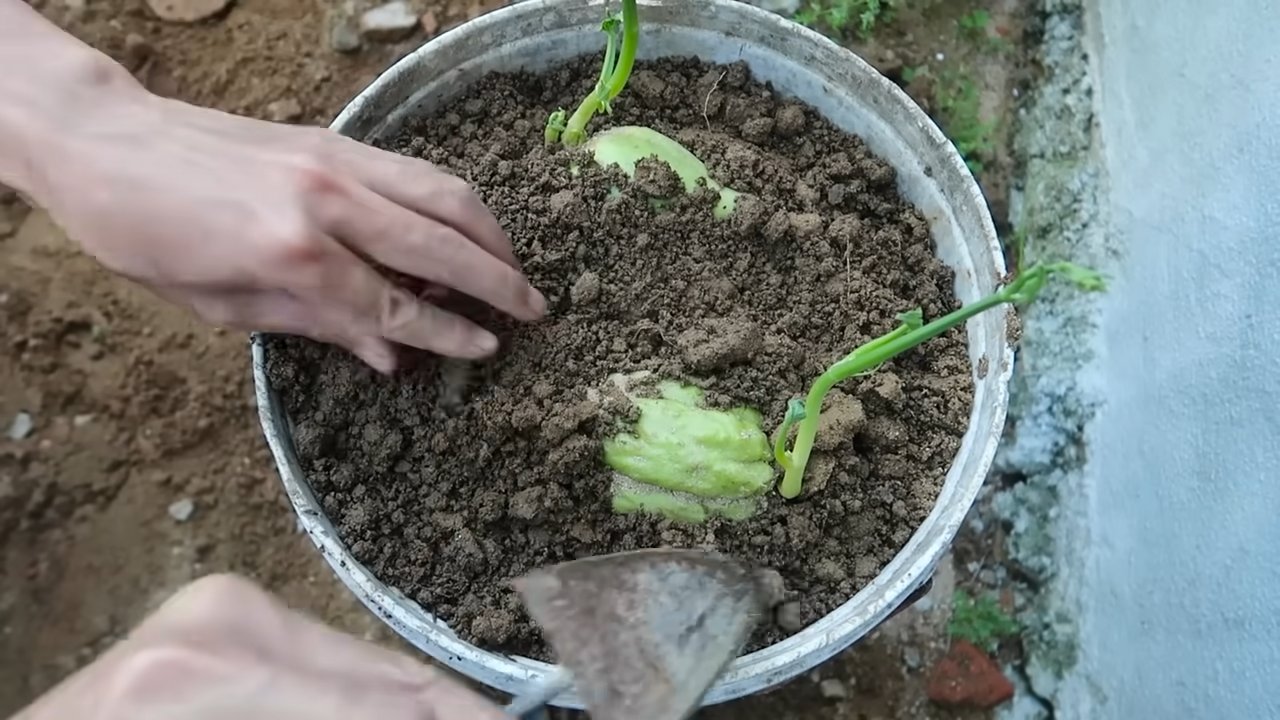
Conclusion
So, there you have it! Growing chayote at home is not only achievable but also incredibly rewarding. From a single, humble fruit, you can cultivate a thriving vine that provides you with a continuous supply of fresh, versatile produce. Forget relying solely on grocery stores; imagine the satisfaction of harvesting your own chayote, knowing exactly where it came from and how it was grown.
This DIY trick is a must-try for several compelling reasons. First, it’s an economical way to enjoy chayote. Instead of purchasing it regularly, you’ll have a sustainable source right in your backyard. Second, it’s environmentally friendly. You’ll be reducing your carbon footprint by minimizing transportation and supporting local, homegrown food. Third, it’s a fantastic learning experience. You’ll gain valuable gardening skills and a deeper appreciation for the natural world. And finally, the taste of homegrown chayote is simply superior. Fresher, more flavorful, and bursting with nutrients, it’s a culinary delight you won’t want to miss.
But the beauty of growing chayote at home lies not only in its simplicity but also in its adaptability. Feel free to experiment with different growing methods. If you live in a colder climate, consider starting your chayote indoors in a large pot before transplanting it outdoors during the warmer months. You can also train your vine to grow on different structures, such as pergolas, fences, or even sturdy trees, creating a beautiful and productive landscape feature.
Consider exploring different varieties of chayote. While the common green variety is readily available, you might be able to find other types with slightly different flavors and textures. Some varieties are smoother, while others have more pronounced ridges. Experimenting with different varieties can add even more excitement to your chayote-growing adventure.
Don’t be afraid to get creative with your chayote harvest. Use it in stir-fries, soups, salads, or even desserts. Its mild flavor makes it a versatile ingredient that can complement a wide range of dishes. You can also pickle it, ferment it, or even make chayote jam. The possibilities are endless!
We wholeheartedly encourage you to embark on this exciting journey of growing chayote at home. It’s a simple, sustainable, and satisfying way to connect with nature and enjoy fresh, delicious produce. Once you’ve experienced the joy of harvesting your own chayote, you’ll never look at this humble fruit the same way again.
So, grab a chayote, follow our simple steps, and get ready to witness the magic of nature unfold in your own backyard. And most importantly, we want to hear about your experiences! Share your tips, tricks, and triumphs in the comments below. Let’s create a community of chayote enthusiasts and inspire others to embrace the joy of homegrown food. We are confident that you will find growing chayote at home a rewarding experience.
Frequently Asked Questions (FAQ)
What is the best time of year to start growing chayote?
The best time to start growing chayote depends on your climate. In warmer regions with mild winters, you can start the process in late winter or early spring. In colder regions, it’s best to start indoors about 6-8 weeks before the last expected frost. This gives the plant a head start before being transplanted outdoors. The key is to ensure that the plant is exposed to warm temperatures and plenty of sunlight once it’s established.
How much space does a chayote vine need?
Chayote vines are vigorous growers and require ample space to thrive. Ideally, provide at least 10-15 feet of horizontal space for the vine to spread. They can also be trained to grow vertically on a trellis, fence, or pergola. Ensure that the support structure is sturdy enough to handle the weight of the mature vine and its fruits. Proper spacing allows for adequate air circulation, which helps prevent fungal diseases.
How often should I water my chayote plant?
Chayote plants need consistent moisture, especially during the growing season. Water deeply and regularly, ensuring that the soil remains consistently moist but not waterlogged. The frequency of watering will depend on the climate, soil type, and rainfall. Check the soil moisture regularly and adjust your watering schedule accordingly. During hot, dry periods, you may need to water daily.
What kind of soil is best for growing chayote?
Chayote plants thrive in well-draining, fertile soil that is rich in organic matter. Amend the soil with compost, aged manure, or other organic materials before planting to improve its fertility and drainage. A slightly acidic to neutral soil pH (around 6.0 to 7.0) is ideal. Avoid heavy clay soils that retain too much moisture, as this can lead to root rot.
How long does it take for a chayote plant to produce fruit?
It typically takes about 4-6 months for a chayote plant to start producing fruit after planting. The exact timing will depend on the climate, growing conditions, and variety. Be patient and provide the plant with proper care, including adequate sunlight, water, and nutrients. Once the plant starts producing, you can expect a continuous harvest throughout the growing season.
Are there any common pests or diseases that affect chayote plants?
Chayote plants are generally resistant to pests and diseases, but they can occasionally be affected by aphids, spider mites, or squash bugs. Monitor your plants regularly and take action promptly if you notice any signs of infestation. You can use insecticidal soap, neem oil, or other organic pest control methods to manage these pests. Fungal diseases, such as powdery mildew, can also occur in humid conditions. Ensure good air circulation and avoid overhead watering to prevent these diseases.
Can I grow chayote in a container?
Yes, you can grow chayote in a container, but it requires a large and sturdy pot. Choose a container that is at least 20 gallons in size and has good drainage holes. Use a high-quality potting mix that is rich in organic matter. Provide the plant with a strong trellis or support structure to climb on. Container-grown chayote plants may require more frequent watering and fertilization than those grown in the ground.
How do I know when a chayote fruit is ripe?
Chayote fruits are typically harvested when they are still young and tender, about 4-6 inches in length. The skin should be smooth and light green. Avoid harvesting fruits that are overly mature, as they can become tough and fibrous. You can gently press on the fruit to check for ripeness. It should feel firm but slightly yielding.
Can I eat the chayote leaves and shoots?
Yes, the young leaves and shoots of the chayote plant are edible and can be used in salads, stir-fries, or soups. They have a mild, slightly sweet flavor. Harvest the leaves and shoots when they are young and tender. Avoid consuming large quantities of mature leaves, as they may contain higher levels of cucurbitacins, which can cause bitterness.
How do I store chayote fruits?
Chayote fruits can be stored in the refrigerator for several weeks. Place them in a plastic bag or container to prevent them from drying out. You can also store them in a cool, dark place, such as a root cellar. Avoid storing them near ethylene-producing fruits, such as apples or bananas, as this can cause them to ripen too quickly.

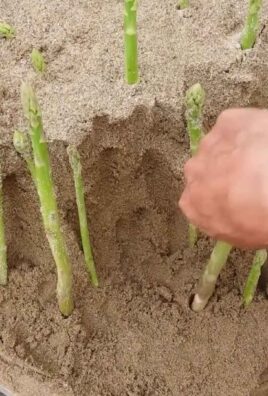
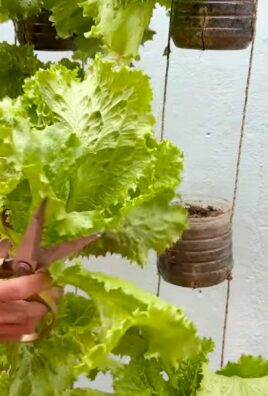
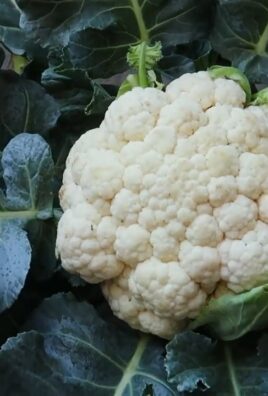
Leave a Comment